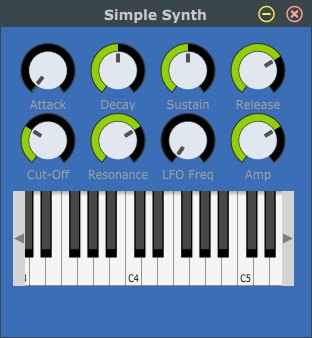Introducing Midichi, a MIDI chord interface

Download Midichi here - see end of post for download CRC hash. Yet another one-finger chord interface for my Arturia Keylab 49 Mk1. Previous versions were console based and used python here and here . Their replacement, Midichi, is written for Windows in C# offering a GUI in a self-contained package that’s available for free download here . It should work with other keyboards as long as you use the same MIDI pad/control mapping, see below. Midichi’s only dependency is a pre-existing virtual Midi port. I use Tobias Erichsen's loopMidi here . Midichi provides a bridge between an input device eg keyboard, and the output device, the virtual Midi port. Once Midichi has been installed and run it should find all the running Midi interfaces. Use the scrollable lists to select input and output then click ‘Select Devices’. Midichi will save this selection so the next time it will select those devices (if they are still running) by default. Midichi will display ‘MIDI Devices Selected –

